 |
| Category: Army
Today/Cadets |

|
This page is a sub
category index |
|
|
|
|
Army Cadet
History 2 versions. Also an
index to Unit histories |
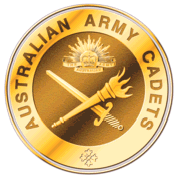 |
An invitation is hereby
extended to all/any Cadet unit of ANY Service from either Australia or
New Zealand to submit articles or photos of historical interest to
appear here. |

Sub Category Index
|
| The most famous event in
Australian cadet history, the presentation of the Duke of Edinburgh Banner
to the Corps of 46,000 cadets from Australia and Papua New Guinea, occurred
on the 2nd of May, 1970. |
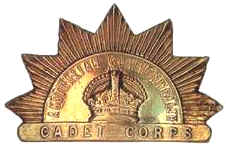 |
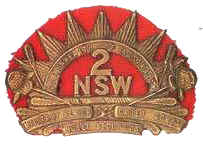 |
| The badge,
above left, is
the one worn by junior Cadet Corps units. |
Badge
of the NSW Senior Cadet Corps formed in 1907. This was based on the
2nd pattern of Rising Sun Badge not the more recent 1904 version |
|
note that Cadet Corps Unit badges
only had 7 points, not the 9 or 13 of the major units
|
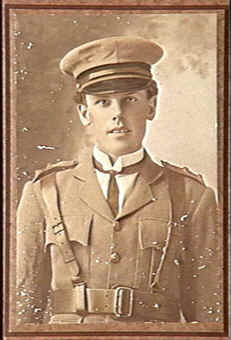 |
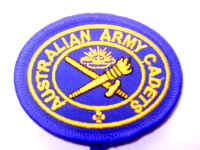
Frederick Clarance EARP.
Lieutenant EARP is wearing the post 1913 pattern jacket and the green
hat band would indicate he is a member of an infantry Cadet Unit. EARP
enlisted in the AIF on 4 August 1915 as a Private in the 3rd Battalion
and was KIA 5 May 1917. (Donor:
W. Connell)
|
|
Caulfield Grammar School,
Australian Cadet Corps
Olive drab khaki battle
dress blouse as worn by a Cadet Corporal circa 1955 to 1965.

Top: Skill at Arms
(rifle) badge
Centre: not known
(possibly band)
Lower: 1 year
Efficiency badge
Right: School
specific shoulder title, whistle lanyard in school colours, school colla
badge, ACC shoulder badge (on incorrect side as the Torch of Learning
should point forward. This is a right shoulder badge), rank chevrons for
Corporal. |
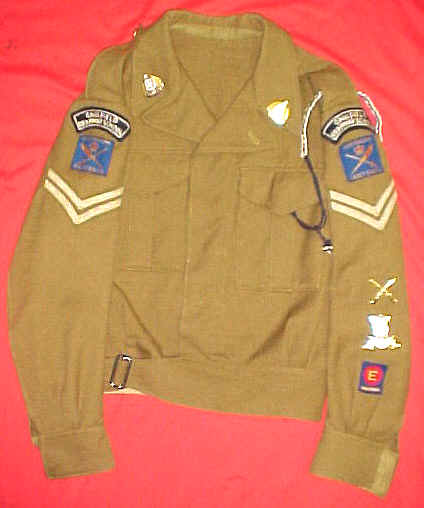
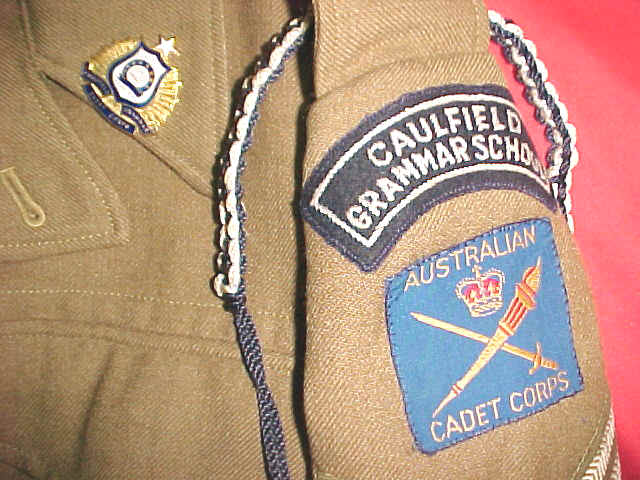
|
| How
Cadets started in Australia, the NSW version |
The origin of the
Australian Cadet Corps is entwined with the early military history of
Australia, mainly through the Reverend George Fairfowl MacArthur.
Military drill had been introduced to some schools in
Sydney as early as 1834. A member of MacArthur’s staff, William Dalmas,
had been on a visit to England where he had observed the greater public
schools operating cadet-training schemes. He returned fired with
enthusiasm for the benefits that the boys derived from such training.
Reverend MacArthur, who had been an Army chaplain, needed little
persuasion to write to the OC Volunteer Force (NSW) in February 1866,
requesting ‘consideration of a proposal to institute a Corps of
Cadets.
Approval to raise the unit was granted on 29 March
1866. The continuity of the cadet unit was preserved and in August 1868
royal assent was granted to change the title to The King’s School
Cadet Corps. At about that time state schools were beginning to take an
interest in cadets and the total cadet strength of New South Wales
increased from less than 200 in 1870 to 850 in 1871. Military drill was
introduced into the public schools’ curriculum in 1870. In 1872 the
NSW Council of Education decided that teachers who were not trained in
military drill would be required to take instruction so that they could
give drill to their pupils. As a result cadet units began to appear in
state schools.
The cadet movement became a popular activity in Australia’s eastern
colonies. Financed by parents, guided by the various Government
departments and aided with varying degrees of enthusiasm by the colonial
defence authorities, the movement prospered until the depression years
of the 1890s, when a number of schools were forced to abandon their
units.
Despite Sydney’s claim to the first unit, the idea of a school cadet
corps seems to have originated in Victoria.
In 1867 a more determined effort to establish a
cadet corps was made. Captain Frederick Thomas Sargood, an officer in
the Victoria Volunteer Artillery was charged with the responsibility of
forming a body of cadets from the secondary schools of Melbourne to
participate in the formal welcome to His Royal Highness, the Duke of
Edinburgh.
Lieutenant Colonel Frederick Sargood in 1884 sent a circular to 16
schools in Victoria seeking support for the formation of a cadet corps.
As a result, a meeting of headmasters under the chairmanship of Mr A. S.
Way, principal of Wesley College, drew up a number of resolutions that
led to the formation of the Victorian Cadet Corps.
Colonel Sargood approved the resolutions and the first units were
gazetted on 23 January 1885. The Department of Defence assumed
responsibility for the Corps but the Department of Education remained
involved. This situation resolved itself in 1891 when Sargood (now Sir
Frederick) held both portfolios. In New South Wales no happy compromise
was reached; the Department of Public Instruction (later Education)
remained responsible until the Department of Defence decided to involve
itself in 1893.
In Melbourne a school holiday was proclaimed on 19 November 1886 to mark
the occasion of the first public parade of all the cadet forces in
Victoria at Albert Park. More than 2000 cadets representing the units of
41 state schools, 11 independent or private schools and one Roman
Catholic School were inspected by the Governor.
Rifle training seemed generally to be held on a Saturday morning and was
frequently followed by a rifle competition in the afternoon. At this
time it was by far the most popular sport in all the colonies. School
units competed in local competitions, special invitation events,
inter-school matches and, finally, inter-colonial matches. Most school
histories abound with details of the performances of their rifle teams.
Although defence became a Commonwealth responsibility when the
Australian States federated in 1901, cadets remained under State
auspices until 16 July 1906, when the Commonwealth Cadet Corps was
established. The Defence Act of 1910 embodied the Corps in the
provisions for Universal Military Training. In this scheme, service in
the Junior Cadets was made obligatory for all medically fit boys between
the ages of 14 and 18 years.
Following the suspension of Universal Military Training in 1929 and the
introduction of the voluntary Militia training system, the cadets were
divided into two categories for the purpose of organisation and
training:
Regimental detachments of Senior Cadets, affiliated with units of the
Militia Forces, including all arms and services, were established, the
age for enrolment being from 16 to 18 years. Enrolment was authorised up
to 20 per cent of Militia unit establishment and, prior to enlistment,
the cadet was required to give an assurance that he would continue to
serve with the unit on a voluntary basis after reaching the age of 18.
Detachments of Senior Cadets, not affiliated with
units of the Militia Forces, were the other category. They consisted of
pupils attending approved educational establishments, the minimum age
for enrolment being 14 years. Administration and training were the
responsibility of officers who were appointed from the school teaching
staff, and student officers selected from the schools concerned and
appointed as cadet lieutenants. There was no assistance from Regular
Army staffs at that stage.
In November 1939 due primarily to the necessity for
withdrawing Permanent Military Force (Regular Army) staff’s from
Militia units to supplement and train units for the overseas force, it
was decided to abandon the training of regimental detachments of the
Senior Cadets.
During June 1941, action was taken to appoint an
officer with a small staff in each State Military District for the
purpose of controlling cadet activities. In December 1944, approval was
granted for the issue of uniforms to cadets at public expense. Approval
was finally given in May 1945 for all expenses in connection with annual
cadet camps to be paid from public funds on the Army vote.
The title ‘Australian Cadet Corps’ was first
adopted officially in the Commonwealth of Australia Gazette, No 59 of
195 1. On 24 May 1963 Field Marshall His Royal Highness, Prince Philip,
the Duke of Edinburgh KC, KT, OM, GBE became the Colonel-in-Chief and on
2 May 1970 at Victoria Barracks in Sydney, he presented his personal
banner to a parade representing a Corps of some 46 000 cadets in
Australia and Papua New Guinea.
The Government disbanded the Corps in 1975 and it was
re-raised on 1 October 1976 when greater responsibility for the running
of their cadet units was placed on schools and the community.
|
|
How Cadets started
in Australia, the Victorian version |
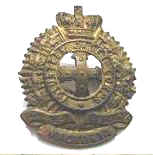 |
In 1867, Captain Frederick Thomas
Sargood was charged with forming a body of cadets to welcome HRH The Duke of
Edinburgh. On the 23rd January 1885, the then Lieutenant Colonel Sargood
approved and gazetted the formation of the Victorian Cadet Corps. By Mid 1885,
there were nearly 2000 cadets enrolled throughout Victoria.
<<< Volunteer Cadet Corps badge,
Victoria pre 1900. Also see below |
|
On the 16th July
1906, the Commonwealth Cadet Corps was raised which included all the separate corps of the country's states.
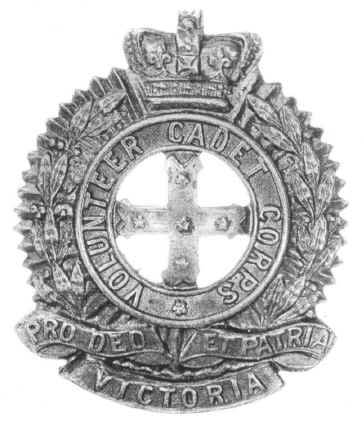
|
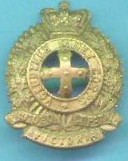
In 1910, Defence Act
enabled the Corps to engage in Universal Military Training and the rule of
cadets being between the ages of 13 and 18 was instituted.
But in 1929,
Universal Military Training was suspended and the cadets were divided in to
cadets affiliated with the Militia Forces and cadets not affiliated with the
Militia Forces.
|
When World War Two
broke out in 1939, permanent military staff were withdrawn from cadets to
obviously aid in the war effort.
But in 1941, Regular Army staff were
re-introduced with cadets. Cadets were then banded back together and re-affiliated
with the Militia Forces.
In 1939 there were
4600 cadets, 1941 - 10,000 cadets and in 1944 - 13,000 cadets. In December of
1944, approval was given to issue uniforms at public expense and in 1945,
approval was given for the expenses of Annual Camps to be paid by the Army.
In 1951, the title;
Australian Cadet Corps was first officially adopted and on the 24th May 1963,
HRH The Duke of Edinburgh became the Colonel-in-Chief.
The most famous event in Australian
cadet history, the presentation of the Duke of Edinburgh Banner to the Corps of
46,000 cadets from Australia and Papua New Guinea, occurred on the 2nd of May,
1970.
In
1975, the Australian Cadet Corps was disbanded and ceased to receive support
from the Government.
On 1st October 1976,
the Cadet Corps was re-raised and the responsibility was given to the schools
and communities of the units.
In 1981, the posted
strength of the Australian Cadet Corps was 20,650.
In 2001, after the
Topley Report was released into what changes should be made to the Cadet Scheme,
the Australian Army Cadet Corps (ACC) was changed to the Australian Army Cadets
(AAC). As was the Naval Reserve Cadets (NRC) to Australian Navy Cadets (ANC),
the Air Training Corps (AIRTC) to Australian Air Force Cadets (AAFC) and the
Australian Services Cadet Scheme (ASCS) to Australian Defence Force Cadets
(ADFC).
Today, the
Australian Army Cadets which is fostered by the Australian Army is one of the 3
youth military services organisations that make up the Australian Defence Force
Cadets. The other organisations are the Australian Navy Cadets that are fostered
by the Royal Australian Navy (RAN) and the Australian Air Force Cadets that is
fostered by the Royal Australian Air Force (RAAF).
The aim of the Australian Army
Cadets is-
-to better equip young people
for community life by fostering initiative, leadership, discipline and loyalty
through training programs which are also designed to stimulate an interest in
the Services
http://www.309rcu.org.au/history.php
Justin Morris
Former Warrant Officer Class Two
309 Regional Cadet Unit
Southern Region, AAC
|

|